The stained-glass maker: 'It's powerful, volatile... too overwhelming for domestic settings'
Thomas Denny is one of the few people left in Britain making stained glass for churches. He spoke to Mary Miers.

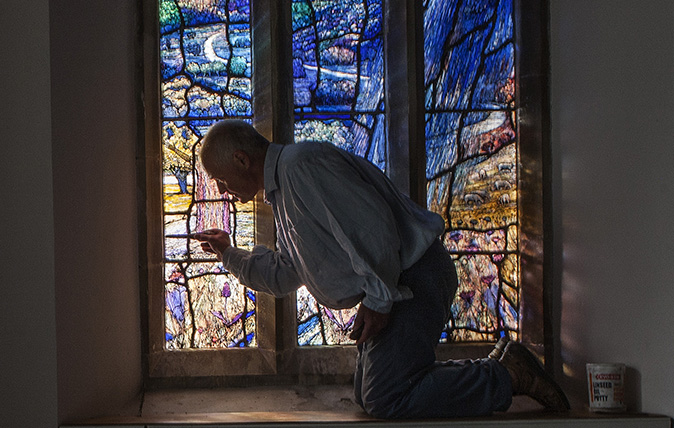
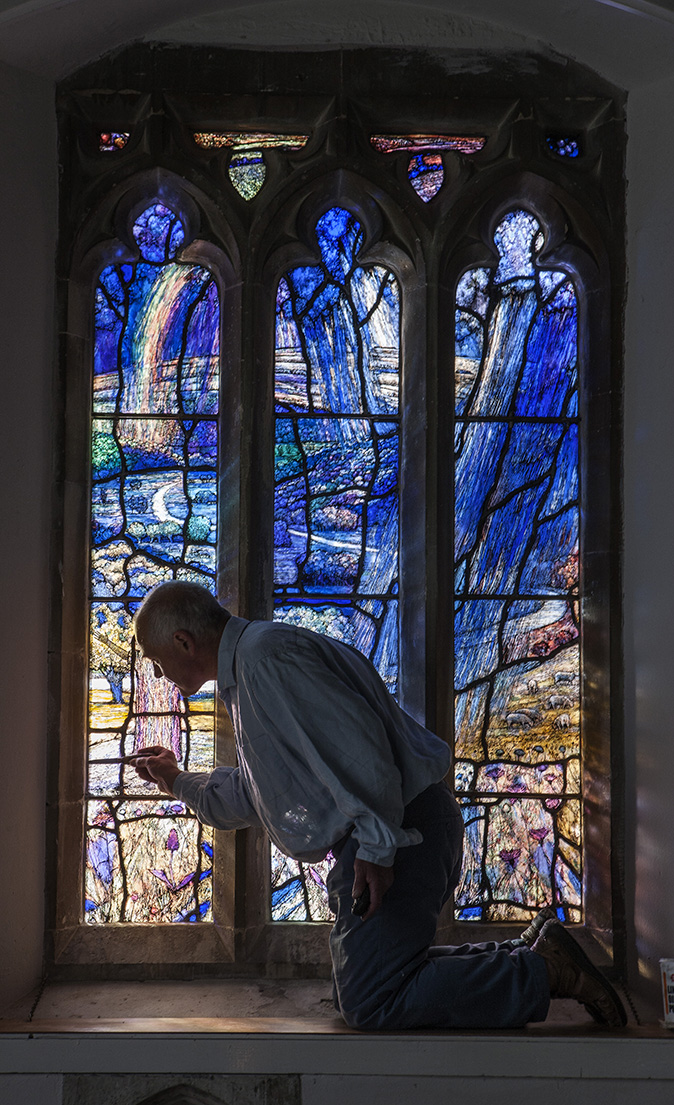
Thomas Denny’s work is rooted in the traditions of the great medieval stained-glass makers. Informed by his love of landscape and beautiful buildings – he grew up partly at Daneway in the Cotswolds; his uncle was the architect Oliver Hill – he makes windows that are not only pictures hidden in colourful patterns, but complex interweavings of naturalistic and biblical imagery, radiant and spiritual.
‘I love the idea of landscape being a vehicle for sacred ideas,’ says Mr Denny, who is based in rural Dorset and whose commissions include three projects at Gloucester Cathedral and a window of reconciliation at St John’s Roman Catholic Church in Tralee, Co Kerry.
He is seen here at All Saints, Woodford, with his memorial window inspired by Psalm 65 (‘The meadows are covered with flocks/and the valleys are mantled with grain’).
Mr Denny describes his medium as ‘powerful and volatile… often too overwhelming for domestic settings’. He explains how stained glass can be deadened by adjacent clear glass: ‘When there’s no surrounding glare, it appears much richer. This intensity creates a feeling of enclosure that’s much more suited to places of contemplation.’
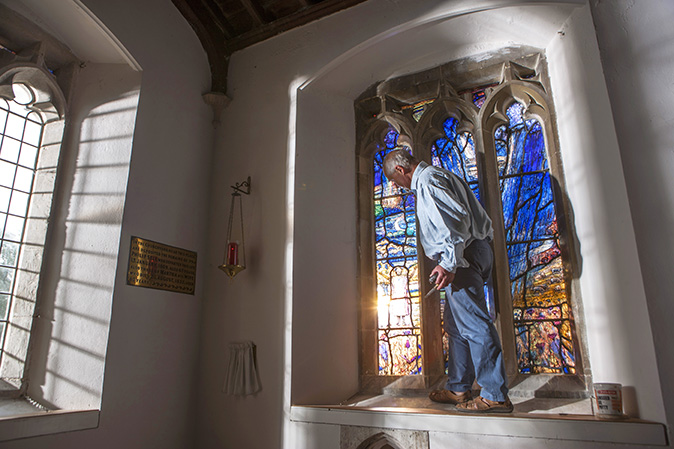
One window can take more than a year to complete, requiring – between initial site visits, paperwork and the final fixing – ‘months of quiet, steady work in the studio’. Once he has scaled up a small painting, he maps out the cut lines. The lead’s tumbling rhythms are composed to support rather than control the overall design.
Using a number of techniques, he then turns glass flashed with flat colour into glass with modulated colour and tone, imagery and texture. The process includes acid etching, ‘coaxing out the narrative detail’ with black paint, silver staining (a medieval technique that introduces lambent golds) and firing.
The glass pieces next go to a craftsman to be assembled and the window can finally be installed: ‘Then, it can really come alive; stained glass depends on honouring and collaborating with its context.’
Exquisite houses, the beauty of Nature, and how to get the most from your life, straight to your inbox.
See more of Thomas’s work at www.thomasdenny.co.uk
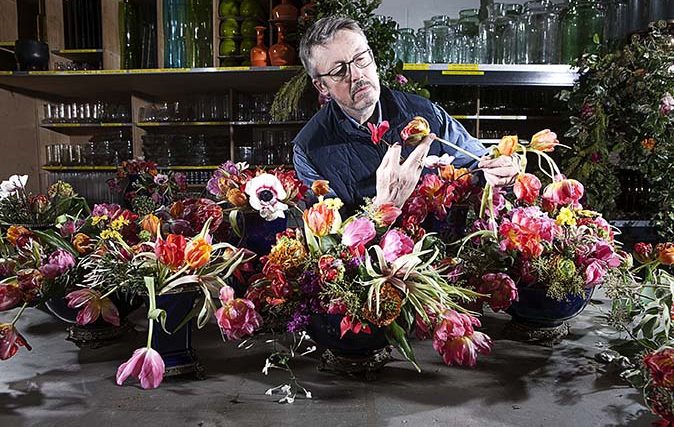
The Florist: 'What I do is like good cooking – if you have beautiful ingredients, you can’t go wrong'
This week's Living National Treasure is royal florist Shane Connolly – and while he might be based in Britain, he's
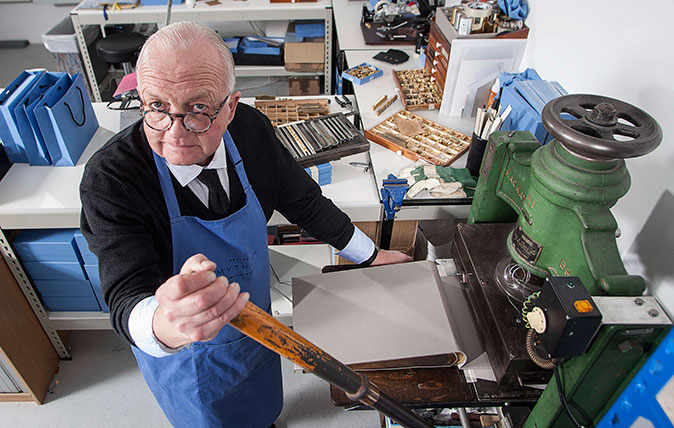
The gold stamper: ‘The younger generation is very appreciative of artisan work – they’re the ones driving the trend’
This week's Living National Treasure is John Timms, the man who leads the team that stamps gold lettering into thousands
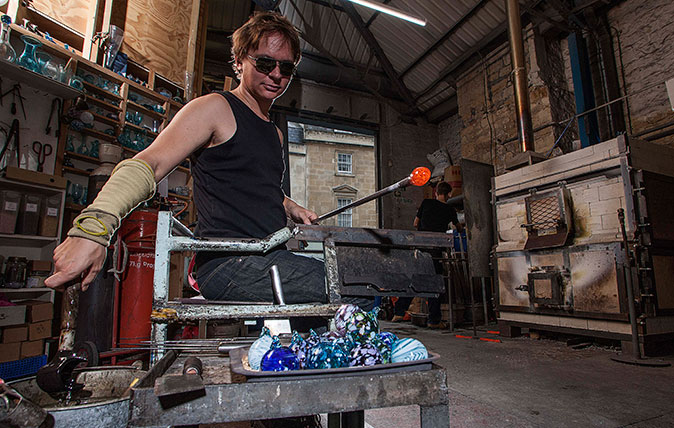
Credit: Living National Treasure: The Glassblower - ©Country Life/Richard Cannon
The Glassblower: 'When something goes wrong you can't fix it – you just sling in into the bosh bucket and start again'
Ian Shearman's team of glassblowers are still making glass using a technique that's 2,000 years old. Mary Miers found out

Credit: ©Richard Cannon/Country Life Picture Library
The Ship’s Figurehead Carver: ‘It used to be a profession and every port would have had one, but now it’s a dying art’
Andy Peters is probably the only person in Britain who could describe himself as a full-time ship’s carver. He spoke
Mary Miers is a hugely experienced writer on art and architecture, and a former Fine Arts Editor of Country Life. Mary joined the team after running Scotland’s Buildings at Risk Register. She lived in 15 different homes across several countries while she was growing up, and for a while commuted to London from Scotland each week. She is also the author of seven books.
